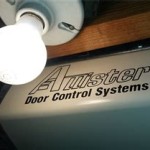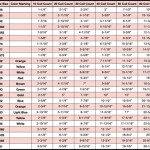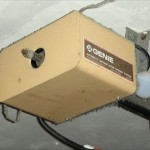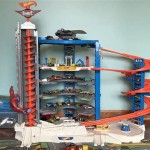Master Lift Garage Door Opener Remote: Functionality, Programming, and Troubleshooting
The Master Lift garage door opener remote is a common component of residential and commercial garage door systems. It allows users to conveniently operate their garage door from a distance. Understanding the functionality, programming procedures, and common troubleshooting steps associated with this remote is essential for proper operation and maintenance of the door.
This article will provide a comprehensive overview of the Master Lift garage door opener remote, covering its basic operation, programming instructions, potential issues, and how to address them. The information presented aims to equip users with the knowledge to maintain and troubleshoot their remote effectively.
Key Point 1: Understanding the Master Lift Garage Door Opener Remote
The Master Lift garage door opener remote operates by transmitting a radio frequency (RF) signal to the garage door opener unit. When a button on the remote is pressed, an encoded signal is sent. If the signal matches the code stored in the garage door opener's receiver, the opener initiates the opening or closing sequence.
These remotes typically operate on a specific frequency, often 315 MHz or 390 MHz. Security features, such as rolling code technology, are frequently incorporated to prevent unauthorized access. Rolling code technology ensures that each transmission generates a unique code, making it significantly harder for someone to intercept and replicate the signal.
Master Lift garage door opener remotes are often designed to be compatible with a range of Master Lift opener models. However, compatibility can vary, so it is crucial to consult the opener's manual or the remote's documentation to ensure proper functioning. Some remotes are universal and can be programmed to work with other brands, but this often requires a more complex programming procedure.
The remote’s power source is generally a battery, typically a small lithium coin cell battery. Battery life can vary depending on usage and environmental conditions. A weak or dead battery is a common cause of remote malfunction and should be the first thing checked when encountering issues.
The physical design of the remote can vary, from single-button models to those with multiple buttons capable of operating multiple garage doors or controlling other features. The more buttons the remote has, the more functions it may be programmed to carry out.
Key Point 2: Programming the Master Lift Garage Door Opener Remote
Programming a Master Lift garage door opener remote involves synchronizing the remote's signal with the garage door opener unit. The programming process generally involves the following steps, although specific instructions may vary slightly depending on the model:
1. Locating the Learn Button: The first step is to locate the “Learn” button on the garage door opener motor unit. This button is usually located on the back of the motor housing or underneath the light cover. The button is often brightly colored, such as yellow, red, or green.
2. Activating the Learn Mode: Press and release the "Learn" button. A small LED light near the button will typically illuminate, indicating that the opener is in learning mode. This mode usually lasts for a short period, typically around 30 seconds.
3. Transmitting the Signal: Within the specified time frame, press and hold the button on the remote that users want to program. Hold the button until the garage door opener's lights flash or the door begins to move slightly. This indicates that the opener has received and recognized the signal from the remote.
4. Testing the Remote: After the lights flash or the door moves, release the button on the remote. Wait a few seconds and then press the button again to test if the remote is successfully programmed. If the door opens or closes, the programming was successful.
5. Reprogramming Multiple Remotes: To program additional remotes, repeat the process for each remote. It is important to program all remotes within the learning mode timeframe.
Important Considerations During Programming:
- Consult the owner's manual for specific programming instructions for a given model.
- Ensure the garage door is visible and free from obstructions during the programming process.
- If the programming fails, try repeating the steps or consulting the troubleshooting section of the owner's manual.
- If the opener has reached its maximum number of programmed remotes, a remote may need to be deleted before a new one can be added. The process for deleting a remote varies among models.
Key Point 3: Troubleshooting Common Master Lift Garage Door Opener Remote Issues
Several issues can arise that affect the operation of a Master Lift garage door opener remote. Addressing these issues promptly can prevent inconvenience and security concerns.
1. Remote Not Working: A common problem is a remote that simply does not activate the garage door. The first step is to check the battery. Replace the battery with a new one of the correct type. Ensure the battery is installed correctly, paying attention to polarity.
If the battery is not the problem, the remote may need to be reprogrammed. Follow the programming steps outlined earlier in this article. If reprogramming fails, the remote may be defective and need to be replaced.
2. Limited Range: Sometimes, the remote only works when it is very close to the garage door. This can be caused by interference from other electronic devices. Try moving other devices away from the garage door opener and the remote to see if it improves the range.
Low battery power can also contribute to limited range. A new battery may resolve the issue. Obstructions such as metal structures can also interfere with the signal. Repositioning the garage door opener antenna may improve the range. In some cases, an external antenna extension can be installed.
3. Intermittent Operation: If the remote works sometimes but not others, it may be due to a loose connection inside the remote. Carefully open the remote casing (if possible) and check for any loose wires or components. If you are not comfortable doing this, seek professional assistance.
Interference from other devices can also cause intermittent operation. Try to identify and eliminate any potential sources of interference. Also, check the garage door opener's antenna for any damage or corrosion.
4. Remote Opening Door by Itself: In rare cases, a remote may activate the garage door without being pressed. This could indicate a short circuit within the remote or an issue with the garage door opener's receiver. Disconnecting the remote's battery will prevent further unintended activations while the issue is investigated.
A more concerning cause could be a neighbor or nearby entity utilizing the same frequency. Reprogramming the remotes and the garage door opener might mitigate this. In cases where the opener continues to activate on its own, professional servicing is advised to rule out opener issues.
5. Security Concerns: If a remote is lost or stolen, it is important to erase its code from the garage door opener's memory to prevent unauthorized access. This can usually be done by pressing and holding the "Learn" button for an extended period (typically 6-10 seconds) until the LED light turns off. This will erase all programmed remotes, requiring them to be reprogrammed.
Regularly check the security features of the garage door opener, such as the photo eyes, to ensure they are functioning correctly. Photo eyes prevent the door from closing if an obstruction is detected. Test the door's reversing mechanism regularly to ensure it is working properly.
6. Incorrect Opener Settings: Some garage door openers feature adjustment settings that can impact remote operation. For instance, force settings define how resistant the door must be before the opener reverses. If these settings are not correct, the door may fail to close or open consistently when activated via the remote.
Diagnostic tools are sometimes available. These tools are brand specific and can deliver real-time feedback about how the opener and remotes are communicating. They may provide actionable data about signals and programming, thereby expediting troubleshooting.
Addressing issues with a Master Lift garage door opener remote often involves a systematic approach. Checking the battery, reprogramming the remote, and considering potential interference are key steps. When more complex problems arise, consulting the owner's manual or seeking professional assistance is recommended. Maintaining a functional and secure garage door system relies on proper remote operation and prompt troubleshooting when problems arise.

Universal Gate Garage Door Opener Remote Liftmaster

380ut 2 Button Universal Remote Control Liftmaster

3 Button Gate Remote Liftmaster

374ut Universal Keychain Garage Door Remote Liftmaster

Liftmaster 1 Button Remote Control Pack Of

Liftmaster 973lm Compatible 390 Mhz Security 3 Button Visor Gate Garage Door Opener Remote

Liftmaster 3 Button Remote Control For Garage Door 893lm

971lm Liftmaster 1 Button Garage Door Opener Remote 390mhz

Liftmaster 891lm Remote Control

373lm Liftmaster 3 Button Garage Door Opener Remote
See Also








